Army sent in as fears grow of NSW impending disaster
About 200 army personnel have joined the rescue operation in northern NSW as the premier warns of a high disaster risk. The death toll in Queensland has risen to eight, with 15,000 homes affected.
The NSW mid north coast is facing a “natural disaster of unprecedented proportions” as 200 army personnel landed in the area to rescue people from roofs and rising water.
There are about 200 people waiting to be rescued by authorities.
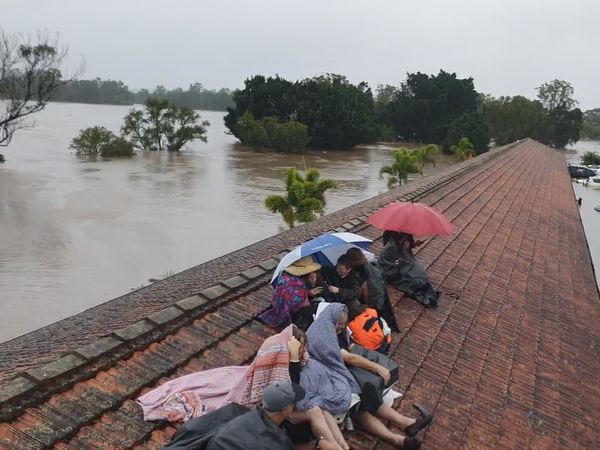
River levels in the region have risen to the highest since 1954 but locals have been slow to flee despite repeated warnings from emergency services.
Heavy rainfall and strong winds are forecast for greater Sydney, further south, on Tuesday.
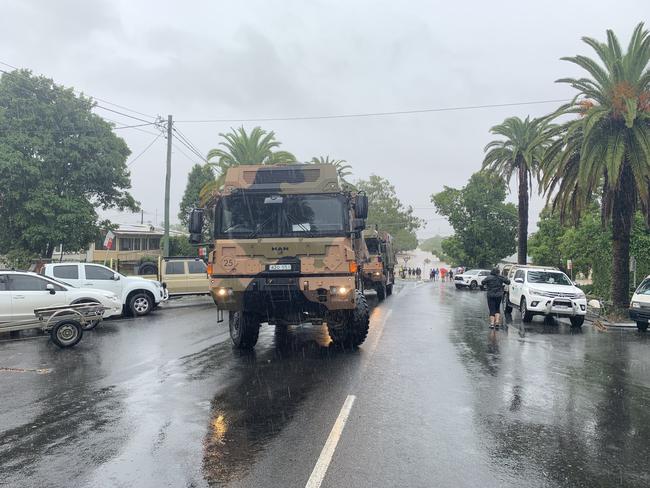
The record-breaking weather event prompted Premier Dominic Perrottet to turn the Rural Fire Service headquarters in Sydney’s Homebush into the hub for the state’s flood response — a decision reminiscent of 2019’s devastating bushfires.
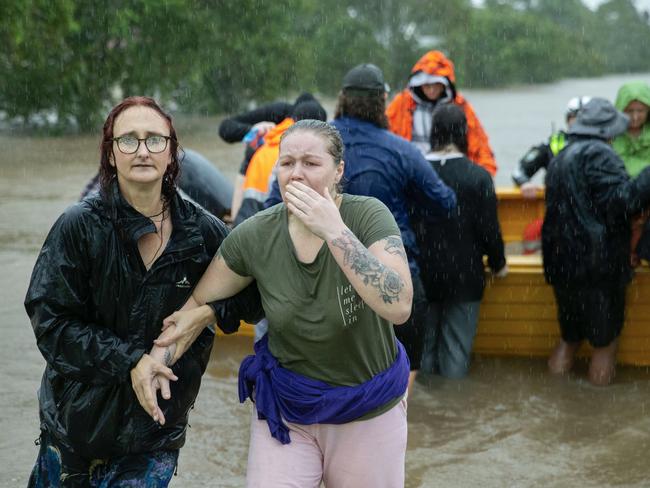
He said the scenes coming from northern NSW were “incredibly distressing” and conditions were expected to get worse “at the back end of this week”.
“The conditions are expected here in NSW to get worse,” he said.
“(There will also be) flash flooding in various areas across our state.”
The deluge is the highest daily observation total NSW has seen since 1954, the state’s 3rd highest rainfall total in history and is the highest rainfall total in Australia since 1998.
1/2 We are facing unprecedent flooding in northern NSW, and unfortunately it's expected to worsen.
— Dom Perrottet (@Dom_Perrottet) February 28, 2022
The State Emergency Operations Centre at Homebush has been activated to manage the whole of government response. pic.twitter.com/Z71uNlIb36
As flooding continues to spread, The NSW State Emergency Service declared just after 10:30am on Monday that locals needed to move to higher ground “immediately” as ”unprecedented flooding” continues to impact across the region.
“NSW SES have declared that areas in the Northern Rivers need to immediately take steps for their safety,” a message posted online read.
Five more evacuation centres have been set up as NSW floods are expected to worsen tonight. In a tweet, NSW Premier Dominic Perrottet outlined the new evacuation centre locations including: Kingscliff, Dunoon, Woodburn, Casino and Rappville.
Latest update to evacuation centres. #NSWFloods https://t.co/61QFV9vLEY pic.twitter.com/5FVLAaHZjp
— Dom Perrottet (@Dom_Perrottet) February 28, 2022
Eight dead in Queensland
The stark warning comes as Queensland records its eighth death following the tragic discovery of a man and his dog in a swept away car on the Gold Coast.
Mr Perrottet described the flood activity as “unprecedented” and said the situation would “worsen”.
With 12 areas facing evacuation orders, Mr Perrottet gave firm warnings especially for communities that have not previously experienced flooding to follow all precautions advised.
“For those people in communities where it has not flooded before, please do not think that a flood will not occur in your community,” Mr Perrottet said.
“If you are in one of those areas where there is an evacuation warning in place, please begin planning and preparing for evacuation. And if you can leave, and it is safe to do so, please, please leave.”
âš ï¸ #Flood Warning issued for #BellingerRiver, major flooding possible at Thora overnight, moderate flooding occurring at Thora and Bellingen, minor flooding likely at Repton and Urunga. See https://t.co/c3TYJZR8Du for details and updates; follow advice from @NSWSES. #NSWFloodspic.twitter.com/GvAXL8kLgx
— Bureau of Meteorology, New South Wales (@BOM_NSW) February 28, 2022
The calls for heightened caution comes as record flood levels were seen in the Wilson River in Lismore, recorded at 14.3 metres and rising. The flood level exceeds the last record set in 1954 of 12.17 metres.
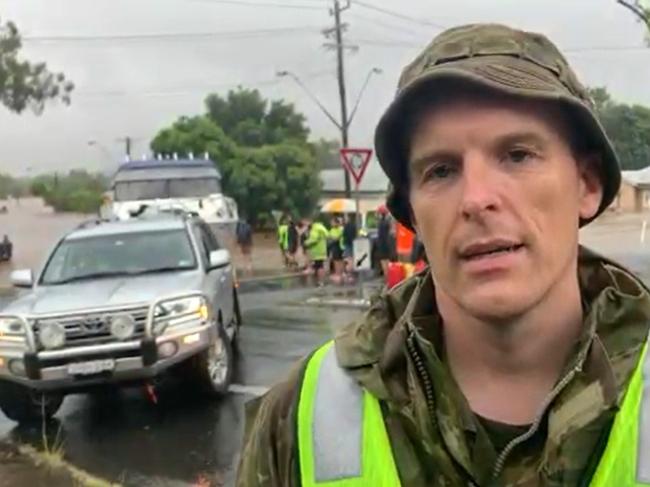
The flood crisis affecting northeast NSW has seen over 500 flood rescues recorded to date and 927 requests for assistance over the last 24 hours. There are 12 evacuation orders currently in place, which are affecting close to 16,000 people and 6 areas under evacuation warning, impacting around 14,000 people.
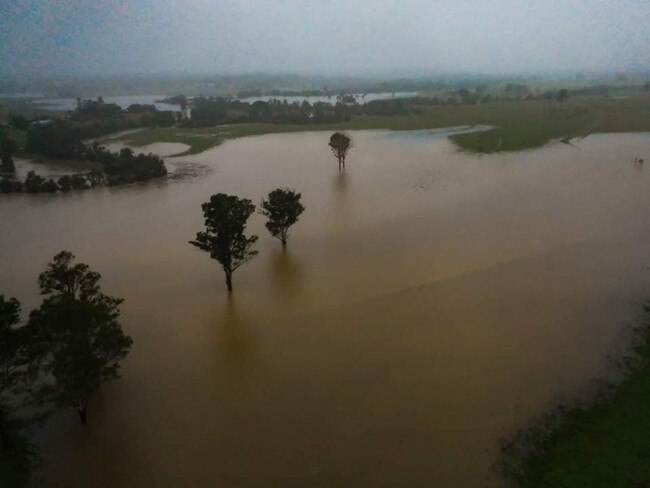
The Bureau of Meteorology has issued several major flood warnings for north-east NSW, including at Thora, and the Richmond, Orara, Brunswick, Clarence, Tweed, Wilsons and Bellinger rivers and Marshalls Creek.
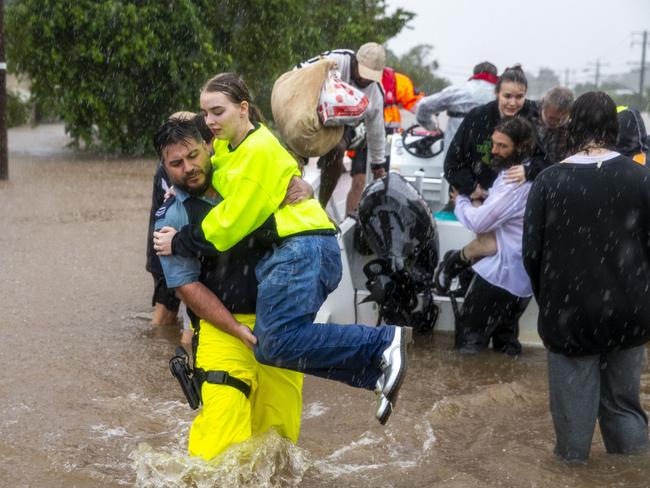
“On Tuesday there’s likely to be a separate low pressure system to form offshore and then that’s expected to deepen and move towards the central NSW coast by Wednesday,” Meteorologist Neil Bennet told The Daily Telegraph.
“This is going to develop some further widespread torrential rain, some possible destructive winds and damaging surf as well.”
“That’s more likely to be to the south of the low which puts Sydney, the Central Coast, Illawarra, and the South Coast right in the firing line from late Tuesday.”
Most schools in Brisbane region to stay closed
Most of south-east Queensland’s schools will remain closed on Tuesday with hundreds of roads still underwater.
Queensland Education Minister Grace Grace said state school students in Noosa, Lockyer Valley and the Sunshine Coast could return to the classroom on Tuesday but schools in 10 local government areas - including Brisbane, Ipswich and the Gold Coast - would stay shut.
“As flood waters recede and we can conduct damage assessments and ensure safe transport, more schools will be able to open,” Ms Grace said.
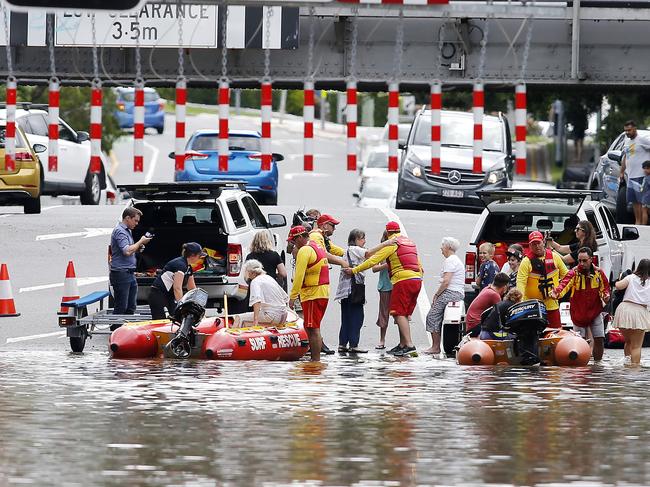
“Across the 10 LGAs where all schools will remain closed, there will be very limited public transport and travelling by road may be dangerous.
“This means while the school site itself may be safe to open, we do not want people out on the streets trying to get to schools when that could be dangerous.”
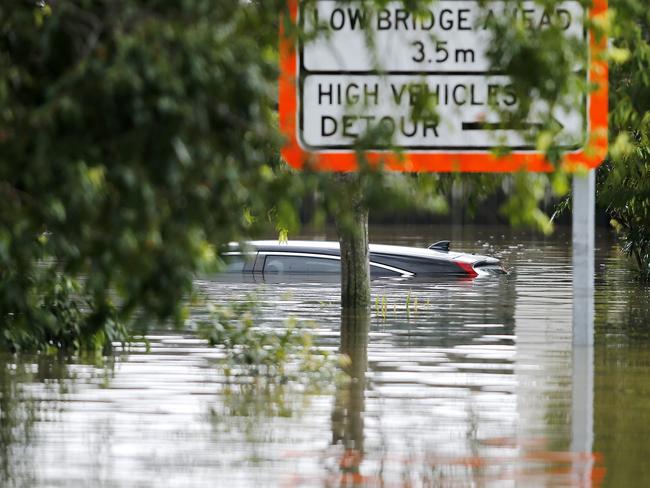
Ms Grace told families to check the Queensland school closure website which includes details for state, Catholic and independent schools. (closures.qld.edu.au)
“The site also guides you on where to get updates on early childhood and care providers,” she said.
“Schools will provide updates to parents through their usual communication channels about the closures, alternate arrangements and reopening dates.”
LGAs where state schools will remain closed are Brisbane, Ipswich, Moreton bay, Somerset, Gold Coast, Logan, Redland, Scenic Rim, Gympie and Cherbourg.
Latest on closures and suspensions in SE Queensland
Seqwater has released a statement that said all recreation areas would be closed until further notice “to allow a thorough safety assessment of recreation facilities, water quality and environmental changes caused by the current weather event.”
With hundreds of roads closed across South-East Queensland, including the Warrego Highway and Ipswich Motorway, access to a number of Brisbane suburbs has been cut.
Transport and Main Roads Minister Mark Bailey said Queensland Rail crews had been inspecting the rail network today, discovering extensive damage to stations, track and overhead electrical wiring at a number of locations.
“Queensland Rail services will remain suspended tomorrow (Tuesday) and possibly longer, due to extensive damage to the network,” Mr Bailey said.
“Safety is paramount, so we will not be resuming train services until it is absolutely safe to do so.”
Mr Bailey said a “limited” number of buses would run on Tuesday but urged customers to check the TransLink journey planner for up to date information.
Boat enthusiasts say their help offer refused
Experienced boaties and people with boating licences sat they have been turned away from aiding Lismore, NSW, flood rescue operations despite hundreds of residents thought to be stranded on rooftops.
More than 400 Lismore residents including children and the elderly are reportedly stranded on rooftops as night approaches.
The report comes after NSW State Commissioner for the SES Carlene York said that helicopter rescues had been delayed due to weather conditions earlier today.
Local residents have appealed via a Facebook group ‘Resilient Lismore’ for boaties to rescue stranded people. More than 143 addresses were listed on the post, involving at least 403 individuals, some of which still requiring rescue.
However, despite a willingness to aid, boaties reported that the SES had stopped them from entering certain flood zones due to safety concerns.
“We have a boat ready to go but we were turned back,” posted one resident. “People need help and rain is getting heavier and we are ready to help.”
Lismore SES urged boat owners not to show up with boats and vehicles this morning in a Facebook post.
Queensland death toll rises
The death toll from Queensland’s flood emergency has risen to eight following the discovery of a man and his dog in a swept away car on the Gold Coast.
The man in his 50s was last seen driving in waters over Currumbin Creek Road near Stackpole Street in Currumbin Valley at 3am on Monday when the car was swept away. Reports suggest the vehicle had been driven 30 to 40 metres into flood waters.
Surf Life Saving Queensland were able to reach the car by rescue boat around 10.45am, finding the man and his dog dead inside the vehicle which had been submerged around 10 metres from the road.
A man who was earlier reported missing in Goodnas, near Ipswich, has been located safe.
Police hold “grave fears” for four people missing.
Two other people are feared dead after their cars were swept away at Yatla on the Gold Coast and at Esk, west of Brisbane.
Another man, aged in his 70s, remains missing after he fell from a boat on the Brisbane River, near the mouth of Breakfast Creek, on Saturday.
There have been deaths in Brisbane, the Sunshine Coast, Gympie and Ipswich and another man is still missing after he fell into the Brisbane River two days ago at Bulimba.
A man, 59, was swept away in Brisbane’s north while trying to cross a road on Sunday. Onlookers raised the alarm, and performed CPR while waiting for paramedics, but he died at the scene.
The body of a 34-year-old man, whose car was swallowed by rising flood waters at Indooroopilly in Brisbane’s west, was found on Sunday morning. Police said he managed to free himself from the sinking car and began to swim to safety, but nearby residents raised the alarm when he failed to surface. His body was recovered a short time later.
Another man, 55, was found in floodwaters in the inner suburb of Stones Corner on Saturday.
State Emergency Services volunteer Merryl Dray, 62, died on Friday when her car was swept away as she tried to help a family escape floodwaters at Coolana, west of Brisbane.
Further north, police divers found the body of a 37-year-old man who disappeared in floodwaters near Gympie, north of the Sunshine Coast on Saturday.
Philip Gary Lambert, 54, died while trying to ride a motorbike through rising water at Gympie last week on his way home from work. Mr Lambert’s death followed the discovery of a 63-year-old woman’s body in a submerged car on the Sunshine Coast on Wednesday.
On Monday, the weather system moved south into northern NSW and the sun has emerged in Brisbane for the first time in days.
Annastacia Palaszczuk has warned Queensland residents that the flood disaster is not over after the Brisbane River reached its peak on Monday morning.
“It is still a significant event. No one had seen this amount of rain in such a short period of time,” she said.
An estimated 15,000 homes have been affected in Queensland’s catastrophic floods.
Brisbane River reached its peak on Monday morning just under 4m; the 2011 floods peaked at 4.46m. Brisbane River may hit a second peak on Tuesday morning at 9am.
While waters rose higher in the 2011 disaster, flooding has been more widespread in 2022, affecting more suburbs.
Ms Palaszczuk said this was because “our creeks and rivers are saturated and are all pouring into our major river system”.
Bruce Highway reopens
The Bruce Highway connecting Brisbane and the Sunshine has reopened after flood waters cut the road on Saturday.
Drivers can now freely travel between Brisbane and Traveston, south of Gympie, allowing access to the entirety of the Sunshine Coast.
The highway remains closed from Traveston to Gympie as significant flooding continues to impact Gympie and Maryborough further north.
The Pacific Motorway between the Gold Coast and Brisbane was closed in several locations at the southern end on Monday morning. Hundreds of road closures are still active in Queensland’s southeast due to flooding.
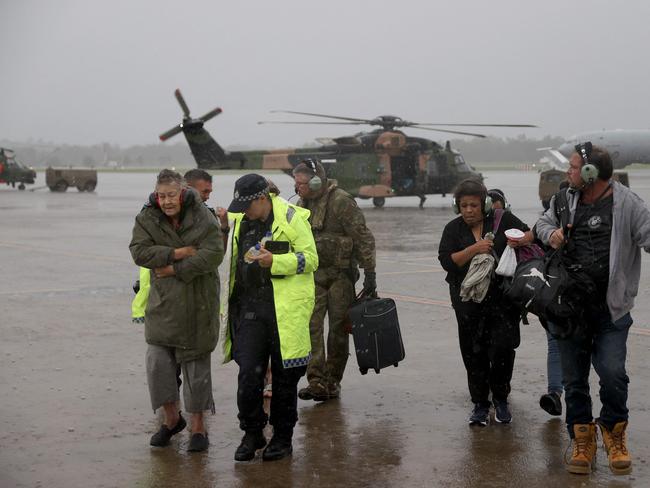
Flood clean up delayed
Brisbane’s flood clean up has been delayed by days as more water is pumped into the city’s swollen river by ongoing releases from Wivenhoe Dam
Wivenhoe Dam’s operator, state agency SEQ Water, will continue releasing millions of litres of water from the vast reservoir to clear space for more rain.
SEQ Water external relations manager Mike Foster said as of Monday, 2.2 million megalitres had flowed into the system and 150,000 megalitres had been released.
He confirmed releases into the flooded river would continue in case the dam was overwhelmed by downpours later in the week.
“It is to ensure our flood compartment is available to use,” he said.
Mr Foster could not say which suburbs would be affected by extended flooding because of the releases.
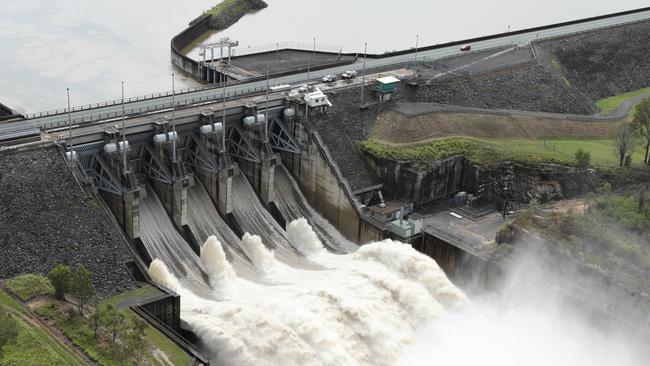
“Our flows won’t cause flooding but the fact that we have to put flows into the Brisbane River to empty the flood storage compartment means that yes there is likely to be some properties where water will stay in for longer.
“We are talking days.”
In 2011, emergency releases from the bulging dam were blamed for 80 per cent of the flooding that devastated Brisbane. Mr Foster said the ongoing releases were to avert a similar disaster.
While waters rose higher in the 2011 disaster, flooding has been more widespread in 2022, affecting more suburbs.
Premier Annastacia Palaszczuk defended the dam operator’s decision not to begin precautionary releases last Tuesday when the government was first warned by the BOM of forecast heavy rain.
‘This was an unpredictable event,” she said.
“Nobody could have reasonably foreseen that in three or four days some areas would have one year of rainfall in one to two days.
“In November we were looking at water restrictions in southeast Queensland. ”
More than 100 people were rescued from flood waters in Brisbane and Logan overnight and there were 1500 people taking refuge in evacuation centres.
Power has been cut to more than 53,000 homes.
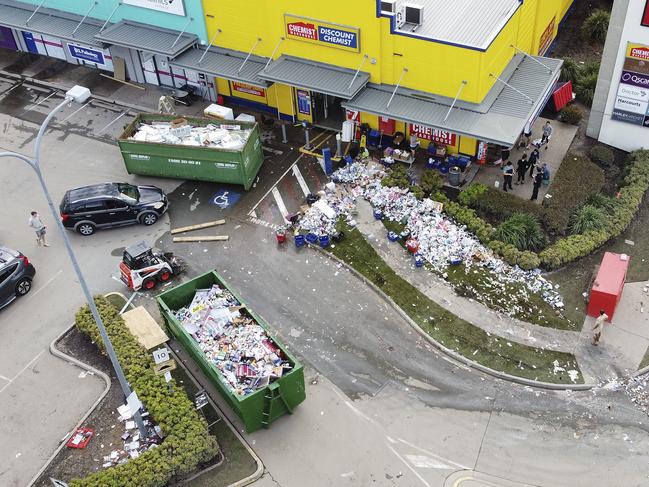
Transport network shut
Brisbane’s transport network has ground to a halt as the city waits for metres of filthy floodwater to recede.
Buses, trains and ferries have been halted, amid extensive disruption to roads, damage to rail lines and river surges.
Brisbane Airport remains open but so far 65 flights have been cancelled on Monday after 71 flight cancellations on Sunday.
About 1000 people were forced to spend Sunday night in the terminal including some workers due to flooding on airport access roads and the suspension of Airtrain services.
Staffing shortages on Monday due to difficulty getting to work, have contributed to flight cancellations and delays through security screening.
Qantas confirmed there was difficulty getting catering on to flights because of flooding and staff shortages. In some instances, passengers were being given vouchers for food and incoming flights were carrying extra meals to help out.
At the height of Sunday’s rainstorm, the main Legacy runway was closed due to water across taxiways.
Long time employees at the airport remarked they had never experienced such flooding, with the 2011 floods having virtually no impact on the gateway.
The Legacy runway reopened on Monday morning to international flights but has been closed again.
Sports stadium not spared
Brisbane’s devastating flood event has not spared the city’s major sports stadiums with water inundating Suncorp Stadium and the Queensland Tennis Centre.
Although the Gabba was largely unaffected by the intense rain, inspections of the wicket block are pending, and the Queensland-South Australia Shield match scheduled for Wednesday will now start on Thursday.
Suncorp Stadium’s playing field was reduced to a small patch of green in the middle of a lake but at this point Friday’s rugby match between Fijian Drua and the Rebels is still going ahead.
At the Queensland Tennis Centre at Tennyson, Pat Rafter Arena suffered minor inundation.
Outside courts were much worse affected with the situation described as “fluid” amid ongoing flooding throughout the area.
The Sleeman Sports Complex at Chandler on Brisbane’s southside was being used as an evacuation centre for residents and remained closed to community use.
Stadiums Queenslan chief executive Todd Harris said the impacts of the extreme weather situation were still being assessed.
“All our venues remain closed to the public. The situation remains fluid and the full impacts of the event will be assessed over the coming days,” Mr Harris said.
“We will let people know of any potential impacts to events as soon as possible.”
Crane causes havoc
A crane has broken free of its pontoon in the Brisbane River causing the evacuation of the city’s trendy Howard Smith Wharves Precinct below the Story Bridge.
Queensland Police issued the emergency evacuation notice shortly before 2pm on Monday, forcing all workers and patrons at the local eateries and those on the riverside walkway to immediately leave the area.
Queensland Premier Annastacia Palaszczuk attended the wharves earlier today to speak to impacted business owners but has since left.
While the instrument has not moved from its position opposite the banks of the CBD and Kangaroo Point, locals have been advised to avoid the area and stay home unless absolutely necessary.
To date, houseboats, yachts and jet skis have been washed into the wharves’ area since the extreme weather event began to unfold in Brisbane late last week.
Lismore battles worst floods ever
An immediate evacuation order has been issued for all flood-prone areas across the entire Northern Rivers region of NSW as locals scramble to safety.
The dramatic turn of events comes as the mayor of Lismore labelled the situation “catastrophic”.
A red alert for people in the area below Rocky Creek Dam in Lismore has been issued by the NSW SES.
The city’s CBD has been inundated by floodwaters with levels reaching the second storey of dozens of buildings.
Evacuation orders are now in place Marshalls Creek, Billinudgel Ocean Shores, New Brighton, Brunswick Heads, South Golden Beach and low lying areas of Coraki.
People in Wilsons River, Lismore and areas of South Lismore are being told to leave.
Orders were earlier issued for the Lismore CBD, South Murwillumbah and Condong.
The mayor of Lismore gave an insight into the “catastrophic” situation facing the city as its flood records continue to break.
Steve Krieg said despite the northern NSW region being well prepared for flooding, the height of the river “really took a lot of people by surprise”.
“It’s not an understatement to say it’s catastrophic,” he told Today.
“A lot of people stayed on and a lot of people felt that given previous floods in Lismore that their houses, at least their top level of their houses, would be a safe place and now even their top floors are under water.”
PM announces federal assistance
Scott Morrison has announced an extension of the commonwealth’s disaster recovery payment to more flood-ravaged areas of Queensland, as 200 ADF troops are deployed to assist in recovery efforts.
Payments will be available from tomorrow for residents in Brisbane city, Fraser Coast, Gold Coast, of course Gympie, Ipswich, Lockyer Valley, Logan, Moreton Bay, Noosa, north Burnet, Redland city, Scenic Rim, Somerset, South Burnett, Southern Downs, Sunshine Coast, Toowoomba.
This afternoon Emergency Management Minister Bridget McKenzie announced that 9 local government areas in NSW’s northeast will be able to apply for individual disaster payments tomorrow.
Speaking to Sky News, Ms McKenzie announced that residents in the following LGA’s will be able to apply tomorrow: Lismore, Ballina, Bellingen, Byron, Richmond Valley, The Tweed, Clarence Valley, Coffs Harbour and Kyogle.
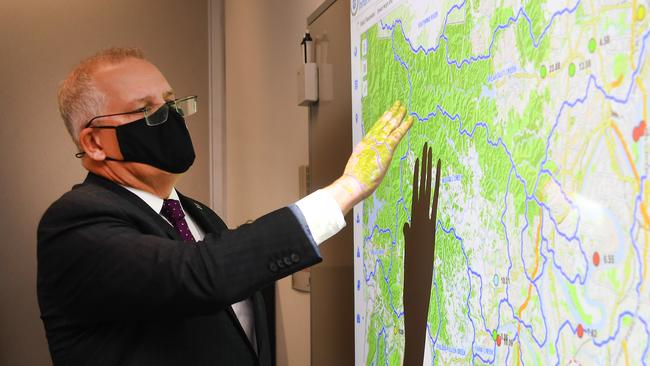
Residents of these areas who are directly affected by the floods will be able to access $1000 per adult and $400 per child.
After an “anxious” night in Brisbane, The Prime Minister said the funding would help in supporting residents during the unfolding crisis.
“These payments are there to provide for some of the most basic needs that people have when they have been impacted by a flood event such as this,” Mr Morrison said.
“They are the same payments that we provide in other natural disasters, whether they be cyclones or bushfires or things of that nature and Services Australia are set up to support those applications for all of the areas.”
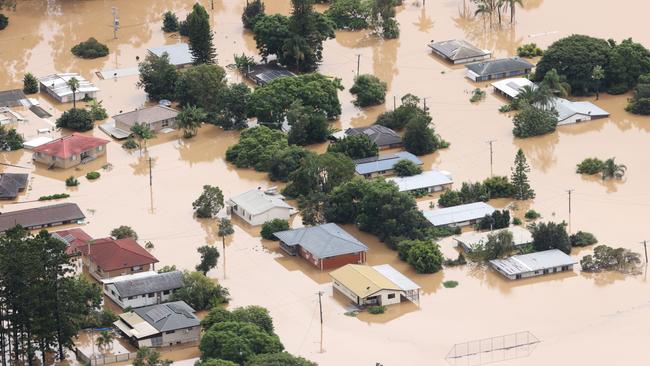
Brisbane River to stay swollen for days
The Brisbane River, which winds through the Queensland capital from the highlands to the west, will stay swollen for days with power to remain cut to thousands of homes and hundreds of roads closed.
Huge volumes of stored water in Wivenhoe Dam will be dumped into the river system in the coming days to protect the structure and keeping flood levels high.
Almost 1000 schools were closed on Monday, in Brisbane, Ipswich, the Lockyer Valley, Gold Coast, Sunshine Coast, Gympie and Maryborough.
All trains have stopped and those who can work from home have been urged by the Premier to do so.
Management of the city’s flood shield, Wivenhoe Dam – disastrously at fault in 2011 – is again in the firing line after the operator conceded it had been prevented from making pre-emptive releases by its own rule book.
This means huge volumes of stored water will be dumped into a swollen Brisbane River in the coming days to protect the structure, potentially compounding the flood.
Scott Morrison, on hand to pledge federal support, described the unfolding emergency as “very serious” and urged people to follow directions to stay at home or evacuate if necessary. “The key message that we have is it is important for people to stay safe,” the Prime Minister said.
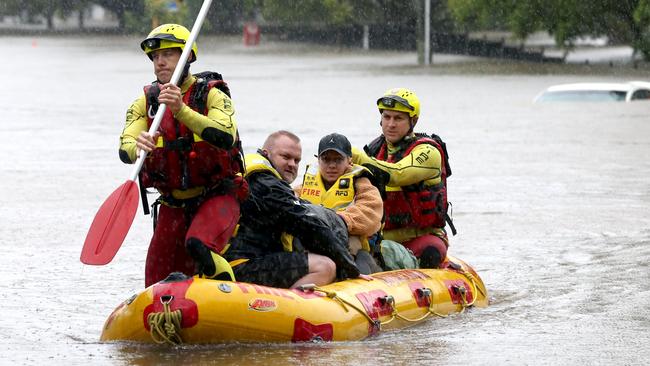
Ms Palaszczuk has ordered 986 schools closed on Monday in Brisbane, Ipswich, the Lockyer Valley, Gold Coast, Sunshine Coast, Gympie and Maryborough as a safety measure. Commuter trains will stop and those who can work from home have been urged by the Premier to do so. Operations at Brisbane Airport were hampered when water rose over a runway.
“We never expected this rain – this rain bomb is just unrelenting. It’s not a waterfall, it’s like waves of water,” she said. “No one expected this rain bomb to be sitting over the southeast of our state for such a long period of time. This is like an unpredictable cyclone.”
The water came up so quickly in low-lying areas of Brisbane that terrified families were trapped in their homes. In inner-west Auchenflower the Hill family were rescued by neighbour David Miller, who pulled up in an inflatable boat as muddy water lapped at the floorboards of their home. Baby NJ Hill, two months, and three-year-old sister Lilly crammed in with parents Lana and Nick. “Everyone kept saying the tide was going down, but it didn’t happen … it just kept rising,” a relieved Ms Hill said after they reached safety.
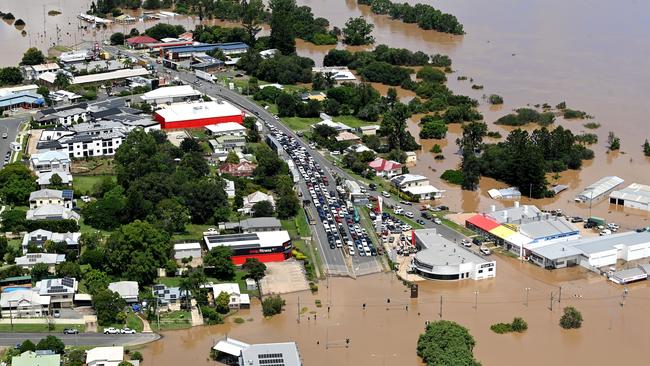
After 700 people were evacuated in Gympie over the weekend, the Mary River was due to peak overnight in Maryborough, threatening more homes if flood levees were overwhelmed. The Logan River south of Brisbane had broken its banks at Beaudesert; at Grantham, in the Lockyer Valley west of the city, locals complained the flooding was worse than the “inland tsunami” that claimed the lives of 12 local residents in 2011.
Mr Morrison said Brisbane was in for an “anxious” time after the river level surged to 3.1m on Sunday, closing in on the 4.46m flood peak 11 years ago when 20,000 homes were inundated. Ms Palaszczuk said the Bureau of Meteorology had advised that the treacherous weather system was expected to drift south and impact northern NSW.
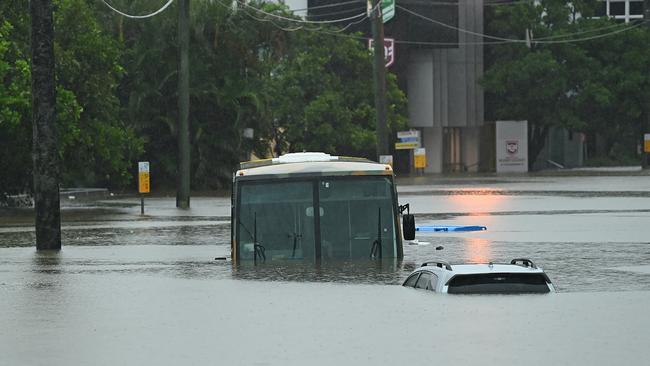
Dam management questions
Ms Palaszczuk said early Sunday that 1400 homes in Brisbane were at risk of having “water over the floorboards”, but this was before the downpours intensified and the city entered another night of fear and uncertainty. Wivenhoe Dam’s operator, state agency SEQ Water, began releasing water from the vast reservoir to the west at 4am Sunday into Brisbane River.
Hopes of averting the scale of destruction of the last flood hinge on the realisation of forecasts of the deluge easing. If not, dam engineers will be forced to continue to discharge millions of litres of water from Wivenhoe into Brisbane River. In 2011, emergency releases from the bulging dam were blamed for 80 per cent of the flooding that devastated Brisbane.
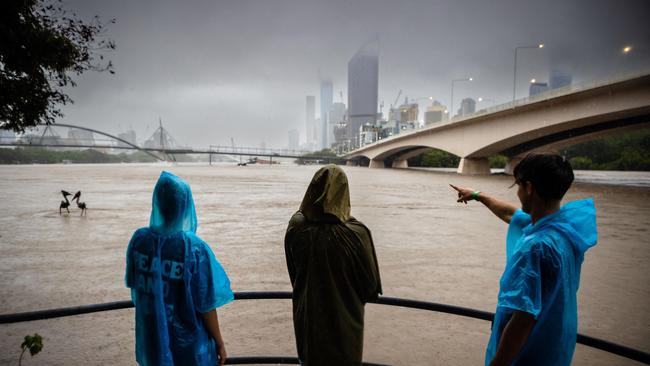
SEQ Water external relations manager Mike Foster defended dam management when asked why water releases had not begun sooner. He confirmed its operating manual – updated after 2011 – did not allow dam engineers to act pre-emptively based on forecasts. They had to wait for weather to hit.
This was despite the fact the dam was at 58.7 per cent capacity on Thursday, 80.6 per cent on Friday, 142 per cent on Saturday and 177 per cent on Sunday – giving engineers more leeway had they acted last week. “We certainly have a manual of operations that focuses on certainty, and when I talk about certainty that is water on the ground,” he said.
Minister warns more disasters because of climate change
Emergency Management Minister Bridget McKenzie has warned that Australians will see more natural disasters because of climate change, calling for the government to invest in a “disaster readiness system”.
Speaking to Sky News today, Ms McKenzie said, “We’re going to see more intense weather events due to climate change, yes we are, and we are preparing for that.”
Ms McKenzie said that in a discussion with the Prime Minister Scott Morrison, Queensland Premier Annastacia Palaszczuk and the Bureau of Meteorology, questions surrounding the cause of the severe flooding had pointed to multiple causes including worsening climate change.
“We do live in a country where this won’t be the last time we deal with something like this whether it’s bushfires, floods, droughts or cyclonic activity,” Ms McKenzie warned.
“We need to have a disaster-readiness system where all avenues of governments are integrated and joined up so that Australians can get the response they need, when they need it.”
Ms McKenzie’s calls for an “integrated” approach to natural disasters comes as criticisms have surfaced over the preparedness of local and state government responses to severe flood warnings.
Emergency Service Minister Steph Cook said earlier today in a press conference that despite warnings from the Bureau of Meteorology, the flood waters had risen faster than anticipated.
“We follow the advice of the Bureau of Meteorology in relation to providing us with good and accurate information around weather systems,” she said.
“But there is no doubt that the water has risen more quickly than we anticipated.”
Labor MP criticises disaster payments process
Labor MP Kristy McBain Christie has criticised the government’s Disaster payment system saying that for people affected, the process is “frustrating”.
“The most frustrating part from people who are impacted by any natural disaster is actually having to ring up and apply for a disaster payment,” Ms McBain told ABC.
“You spend hours on the phone trying to talk to someone to get money to buy food and tomorrow’s underwear. That is the situation people are in when they are making an application for this payment.”
The criticism comes after the Emergency Management Minister Bridget McKenzie, announced a disaster payment package for individuals. Adults as of tomorrow from 9 local government areas in NSW can apply for $1000 per adult and $400 per child.
However, the payment amounts have been criticised as not being enough for people affected by the floods.
Ms McBain says that more than that, the application process itself should be more “streamlined”.
“We need to be able to simply plug in a postcode and people that are affected should be able to access that money in their bank account immediately after a disaster is declared,” she said.
“Will it go to people that aren’t immediately impacted? Yes, it might. But what then happens is they spend that money in their local community, in their local economy.”
However, as Ms McBain called for a less vetted approach to disaster payments, Nationals MP Michael McCaul told ABC that the process was there to gauge a response over time.
“It is a great problem for the people immediately impacted,” Mr McCaul acknowledged.
“But no amount of assistance is ever enough.That is why the Government works as an agency and with others as well - Salvos and Saint Vincent de Paul and all manner of agencies, the SES of course.”
Additional reporting Robyn Ironside, Joanne Tran

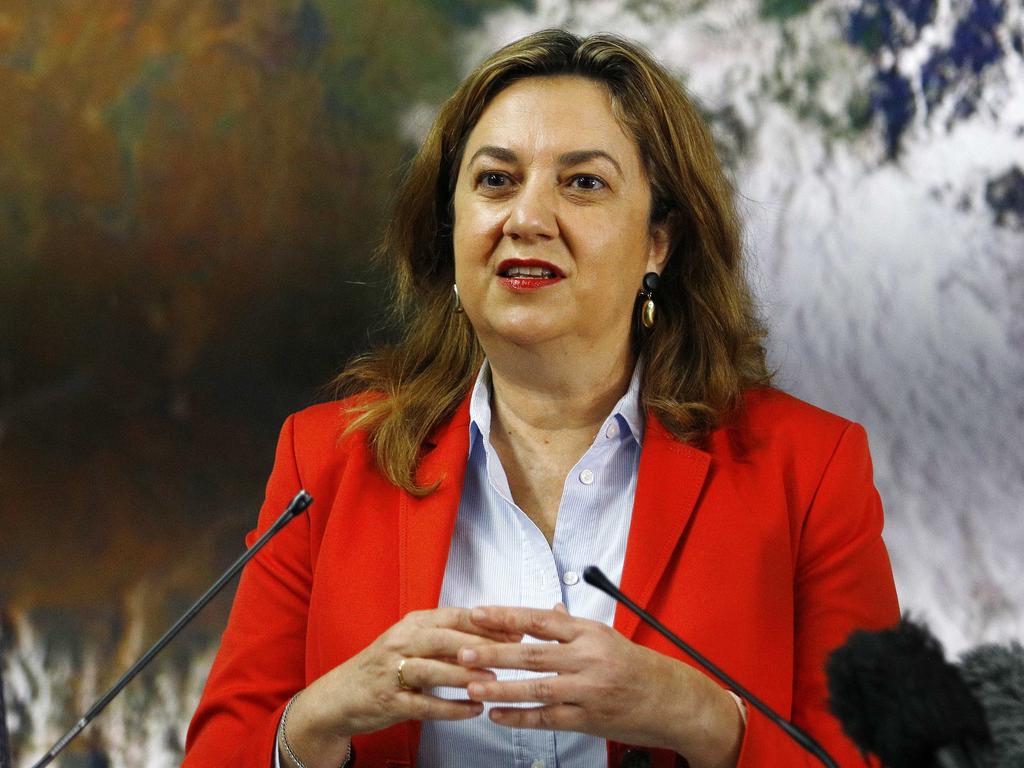


To join the conversation, please log in. Don't have an account? Register
Join the conversation, you are commenting as Logout